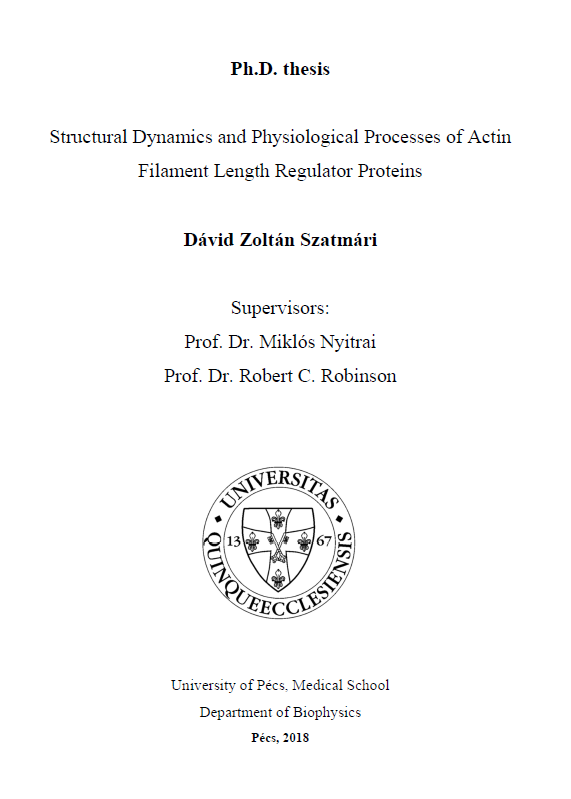Structural Dynamics and Physiological Processes of Actin Filament Length Regulator Proteins
Abstract
Actin is a 42 kDa globular protein. Actin forms microfilaments in eukaryotic cells that are the major component of the cytoskeletal system. In muscle cells, actin filaments are the main component of thin filaments and work as a scaffold of sarcomeres. In vivo actin can be presented as monomer G-actin (globular) or polymer F-actin (filamentous). Both of them are essential for important functions of a cell such as mobility, contraction, division, intracellular transport, signaling processes or maintaining the cell junctions and cell shape. A significant aspect of actin activity is that many intracellular processes are mediated by regulated interactions of actin with cellular membranes. In vertebrates there are three main actin isoforms, alpha, beta, and gamma. Alpha actins, found in muscle tissues, are the major mass of the contractile apparatus. Beta and gamma actins are represented together in many cell types as components of cytoskeleton and mediators of internal cell motility. Cells control the production of F-actin based microfilaments and their dynamical length regulation allows for rapid remodeling of cytoskeletal system, therefore allowing the cell to respond to any external or internal signals. The property of actin that it can be polymerized to long filaments endow an important roles in different cellular processes such as morphogenesis, membrane trafficking, and cell division. Strong cell adhesions, in order to form tissues, or structural proteins in a protrusion of cell membrane, can be anchored to this actin scaffold to allow processes such as endocytosis and cytokinesis. Actin can generate force by its polymerization or by the contribution of motor proteins, therefore actin plays important roles in processes of intracellular transport of vesicles and organelles as well as muscle contraction and cell migration, and is implicated in embryogenesis and invasion of cancer cells.

